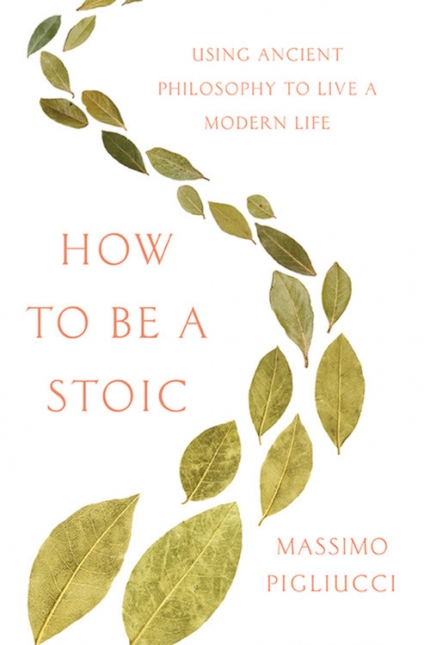How to Be a Stoic
- By Massimo Pigliucci
- Basic Books
- 288 pp.
- Reviewed by Beth Kingsley
- May 13, 2018
Better living through classical ethics.

In seeking answers to life’s most important questions (“How should we handle life’s challenges and vicissitudes? How should we conduct ourselves in the world and treat others?”), Massimo Pigliucci has come to Stoicism, an ancient school of philosophy that offers insights into the human condition.
A reader can be forgiven for asking, “Why would I want to be a Stoic?” but How to Be a Stoic sets the record straight. It begins by distinguishing the way “stoic” has come to be used in contemporary English from what its progenitors intended. Stoicism, as articulated by the ancients and practiced by modern adherents, “is not about suppressing or hiding emotion — rather, it is about acknowledging our emotions, reflecting on what causes them, and redirecting them for our own good.”
The volume is organized around Stoicism’s “three disciplines”: Desire (the idea of what is and is not proper to want; that is, distinguishing what is and is not in our power to effect); Action (how to behave in the world); and Assent (how to react to situations).
In closing, Pigliucci provides some practical spiritual exercises for those interested in exploring Stoicism further — exercises designed to make the Stoic way of thinking and behaving in everyday life become, eventually, second nature.
With explicit allusion to Dante’s choice of Virgil as his guide, Pigliucci takes the Stoic philosopher Epictetus as a guide to his exploration of Stoicism. Perhaps the conceit works better for a book structured as a literal journey, as is the Divine Comedy, but in this case, the occasional dialogue with Epictetus can be distracting.
His language, translated from ancient Greek, strikes modern ears as stilted. The reader cannot always be certain whether the author is relating an experience he had, or imagining an exchange with this fictional embodiment of Epictetus to tease out a point of contention. But this is by no means a fatal flaw, and other readers may find it less bothersome.
The modern approach to Stoicism has been developed by recent authors, and is rooted in both ancient texts and modern insights. Nonetheless, Stoicism shares themes and values with other philosophies and religions. Pigliucci argues for a closer look at the convergence of ideas and guiding principles via diverse cultures and ethical traditions. Further, “There is something very appealing to me, as a nonreligious person, in the idea of such an ecumenical philosophy, one that can share goals and at least some general attitudes with other major ethical traditions across the world.”
There is not, he emphasizes, any “fixed set of doctrines resembling anything like a religious catechism to go by.” Stoics do not even necessarily agree with one another on the existence of God. Rather, what matters to them is to “recognize that a decent human life is about the cultivation of one’s character and concern for other people.”
Because it is not constrained by ideological rigidity, Stoicism expressly allows for updates in light of new information. As we have learned more about human psychology, for instance, modern Stoics have been willing to revisit some of the concepts proposed by their ancient predecessors regarding what aspects of our own behavior are genuinely within our control. Insights from cognitive behavioral therapy have been incorporated into the modern practice. Although How to Be a Stoic examines ancient Greek proponents of the philosophy, it never presents the works as sacred or unquestionable.
How to Be a Stoic is highly readable, written in clear and accessible prose, and illuminated with anecdotes of both a personal and an historical nature. Although not a topical work by any means, many of the points resonate in light of contemporary events. Pigliucci acknowledges this without limiting the impact of his book to a specific contemporary political setting. If anything, this provides fodder for the argument that the Stoic principles have stood the test of time for good reason and are worth considering and engaging with.
Ultimately, Pigliucci urges that “adopting and adapting a philosophy of life to guide you is more important than whichever specific philosophy you end up choosing.” But he makes a persuasive case that Stoicism is worth a try, and offers concrete steps in that pursuit.
[Editor's note: This review originally ran in 2017.]
Beth Kingsley is a member of the boards of the National Capital Area Skeptics and Capital Fringe. In her day job, she is a lawyer for nonprofit organizations.

